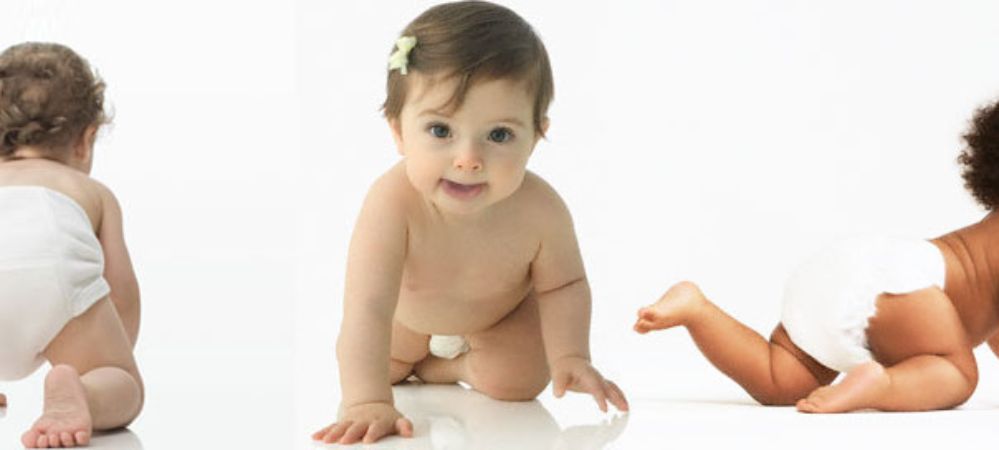Baby's development milestone: Crawling
Crawling is a baby's first attempt to move around independently. Generally a baby starts crawling between 7 months to 10 months. Sometimes the baby skips traditional crawling and adapts to alternative modes like scooting on his bottom, using his arms to propel himself and even roll on the floor to reach a particular place or object. Some babies even go ahead to direct cruising and/or walking skipping the crawling milestone completely.
There is nothing to worry about what style or route they choose or adapt. Getting mobile is important. If they use both- their hands and feet- to get around then there is nothing to worry about.
Crawling development stages
- Your baby is likely to start crawling soon after he's able to sit well without support. After this point, he can hold his head up to look around; his arm, leg and back muscles are strong enough to keep him from falling on the floor when he gets up on his hands and knees.
- Your baby will gradually learn to move confidently from a sitting position to being on all fours and he'll soon realize he can rock back and forth when his limbs are straight and his trunk is parallel to the floor.
- Somewhere around 9 or 10 months, he'll figure out that pushing off with his knees gives him the boost he needs to go mobile. As he gains proficiency, he'll learn to go from a crawling position back into a sitting position. Also he will master at the cross crawling position - moving one arm and the opposite leg together when he moves forward, rather than using an arm and a leg from the same side.
Your baby is now just one step away from walking. The baby will soon begin pulling himself up on everything he can reach, whether it's the coffee table or Grandma's leg. Once he gets the feel of balancing on his legs, he'll be ready to stand independently and cruise while holding on to furniture. Then it's just a matter of time until he's walking, running, jumping and leaping.

Your role in your baby's crawling development
1. Enough tummy time:
Give your baby plenty of tummy time. Placing your baby on his tummy and playing with him for several minutes, few times a day while he's awake and alert will help him to develop muscles that he needs to crawl. Tummy time can also prevent a flat spot from developing on his head, which sometimes happens when infants spend a lot of time on their backs.
2. Encourage him to crawl:
Place objects that your baby desires and wants to reach out to by placing subtle and soft hurdles in the pathway. This will help him cruise through those hurdles and also develop the confidence on manoeuvring and keeping a balance while crawling. Make sure you are around always to help them if they get stuck and cannot release themselves.
3. Baby-proof your house and surroundings
A crawling baby is full of mischief and is trying to get his hands on everything possible. Also as they progress from crawling to cruising they are most prone to injuries. Make sure your house is free of furniture that has sharp edges, keep plants and pots at bay and always be around when they are on the loose, especially if your house has even a couple of stairs.

